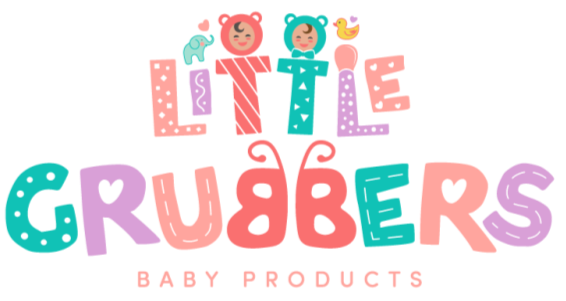The Mealtime Struggles Every Parent Faces
You set the table, prepare a nutritious meal, and eagerly place it in front of your baby—only for them to turn their head, clamp their mouth shut, or push the spoon away. Sound familiar?
A baby refusing to eat is one of the most frustrating experiences for parents. You worry if they’re getting enough nutrition, if they’ll ever eat more than a few bites, or if this is just the beginning of a long battle with food.
First, take a deep breath! Many babies go through phases of picky eating or food refusal, and it’s completely normal. The key is understanding why it’s happening and finding ways to make mealtime a positive experience for both you and your little one.
1. Why Is Your Baby Refusing to Eat?
Before you panic, it helps to understand the possible reasons why your baby won’t eat. Some common causes include:
🦷 Teething Discomfort
Teething can make your baby’s gums sore, making them less interested in eating, especially solid foods.
What to do: Try offering cool, soft foods like yogurt, applesauce, or chilled fruit in a silicone feeder.
⏳ Growth Spurts & Changing Appetite
Babies don’t grow at a steady pace. Some days, they seem to eat everything in sight, and other times, they barely take a bite.
What to do: Trust their natural hunger cues. Forcing food can create a negative association with mealtime.
👶 Independence & Control
Around 8-12 months, babies start asserting independence, and refusing food is one way they test limits.
What to do: Offer finger foods so they feel in control of what they eat. A baby-friendly spoon like the Little Grubbers 3-in-1 Baby Spoon™ can also help encourage self-feeding.
🥄 Texture & Taste Preferences
Babies are still developing their taste buds and might reject certain textures or flavors.
What to do: Keep offering a variety of foods in different textures. A baby might refuse mashed sweet potato but love it roasted!
😴 Fatigue or Distractions
A tired, overstimulated baby is less likely to eat.
What to do: Try feeding in a quiet, familiar environment and ensure mealtimes align with their wake windows.
2. How to Encourage Your Baby to Eat
1️⃣ Keep Mealtimes Relaxed and Fun
Babies pick up on stress! If mealtime becomes a battle, they may associate eating with frustration.
✔️ Smile, talk, and engage while feeding
✔️ Play “bite for mommy” or “bite for teddy” games
✔️ Avoid pressure or bribing—it often backfires!
2️⃣ Offer a Variety of Foods (Without Overwhelming)
Some babies get overwhelmed when presented with too much food.
✔️ Keep portions small—start with a teaspoon and offer more if they’re interested
✔️ Experiment with textures—try mashed, diced, and finger foods
✔️ Let them explore—babies learn by touching and playing with food

3️⃣ Let Your Baby Self-Feed
If your baby resists spoon-feeding, they might just want more control over their meal.
✔️ Offer finger foods (steamed carrot sticks, banana slices, avocado chunks)
✔️ Use a baby-friendly spoon like Little Grubbers’ 3-in-1 Baby Spoon™, designed for tiny hands to grip easily
✔️ Let them explore food at their own pace
4️⃣ Stick to a Routine
Babies thrive on routines, and having set mealtimes helps regulate hunger cues.
⏰ Try feeding around the same times each day
🍽️ Create a simple pre-meal routine (wash hands, sit in the high chair, place a bib)
🔄 Offer meals before milk feedings (around 8-12 months) to encourage solid food intake
5️⃣ Reduce Distractions
Avoid TV, tablets, and too many toys during mealtime. Instead:
✔️ Eat together as a family—babies learn by watching you!
✔️ Use a calm, quiet setting
✔️ Give them their own baby-safe utensils to hold
6️⃣ Try Different Serving Styles
Some babies prefer food presented differently. If they reject something, switch it up!
🍎 Instead of applesauce → Try soft apple slices
🥦 Instead of pureed broccoli → Offer steamed florets
🥚 Instead of scrambled eggs → Try a mini omelet strip
3. When to Seek Help
While picky eating is normal, some red flags may indicate an underlying issue:
🚩 Consistently refusing food for several days
🚩 Losing weight or not gaining weight appropriately
🚩 Choking, gagging, or trouble swallowing frequently
🚩 Signs of a food allergy (rash, swelling, vomiting)
If you’re concerned, always check with your pediatrician or feeding specialist.
Final Thoughts: Trust the Process!
If your baby refuses to eat, don’t panic! Keep offering a variety of foods, make mealtime enjoyable, and follow their hunger cues. Most feeding struggles are temporary, and with patience, your baby will develop healthy eating habits.
💡 Looking for a way to encourage self-feeding? The Little Grubbers 3-in-1 Baby Spoon™ makes it easy for little hands to grip, scoop, and explore new foods!
What Has Worked for Your Baby?
We’d love to hear your experiences! Drop a comment below and share your best tips for handling a picky eater. 😊🍽️✨

